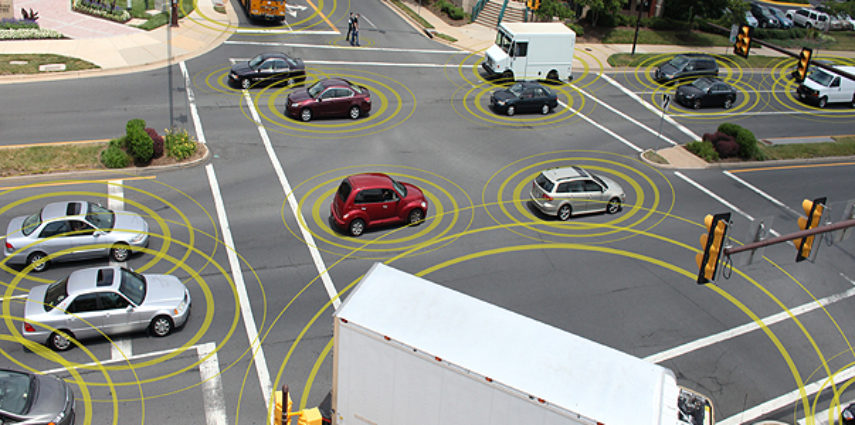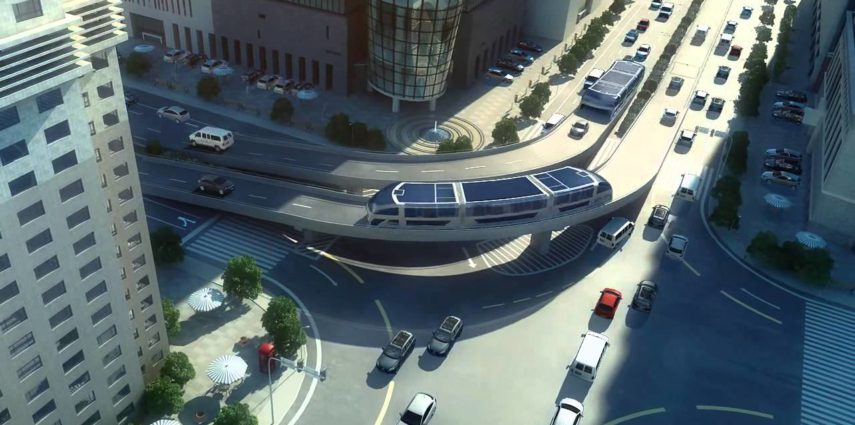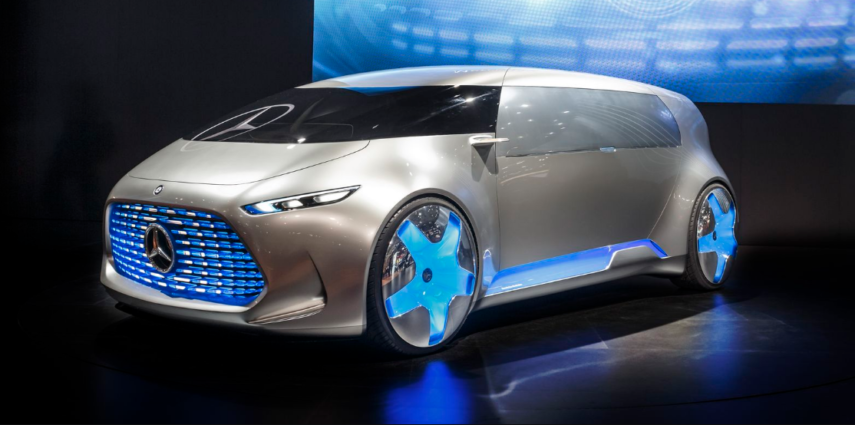Here’s an excerpt from the reca.org article. “Austin resident recently approved a $720 million transportation bond that is, among other strategies, designed to improve traffic flow around several ‘smart corridors’. The physical design improvements aim to improve flow for both transit and private vehicles along key routes.”
Transportation
Real Estate Council of Austin Publishes two part series on transportation featuring Garry Golden
The two-part series focuses on getting the audience to take a look into the future of what transportation might be like in Austin, Texas by “Tapping Your Inner Futurist”. You can take a look a part one and part two of the series at the reca.org site.
Digtal Trends Feature: Energy, Transportation, Urban Planning
A piece that’s still relevant, maybe more now then when it was first published. Reading this piece allows for some context on the foresight Garry shared at the time of writing.
Framing the Debate: Refueling Fuel cells vs Recharging Battery Electric Vehicles
I had a brief Twitter stream exchange with Christoper Mims, Chris Nelder, and John Licata (all brilliant people; respect!) where I threw out some alternative assumptions on two future directions of electric vehicles via plug-in battery versus hydrogen fuel cells. Friends and colleagues have asked why I am so skeptical of battery-powered EVs. Read more
Garry Golden Keynote City of Ontario 2014
A recent keynote delivered for the City of Ontario’s State of the City event in March 2014!
It is not a ‘Driverless Car’, It is the Beginning of Captain Culture
Summary: The ‘driverless car’ headlines are misleading! Humans ‘drivers’ will evolve into ‘Captains’ and still play a critical role in the age of connected cars and autonomous vehicles. Similar to airline pilots who Captain largely automated planes, humans will soon contribute less to decisions on acceleration, braking, and steering and more thinking and control over higher order operations of smarter, connected vehicles. The testing ground Captain-like experiences will be the near term transition of connected cars with ‘active assist’ vehicle systems like adaptive cruise control and platooning. >> One scenario for this Captain-style command and control culture is that it becomes regulated and led by insurance companies to insure humans learn how to use advanced systems safely. The Drivers License might evolve into a Captain’s license 😉
Background
Self-driving cars suitable for real-world operation are closer to reality than most people might believe. Bold claims of bringing autonomous vehicles to markets by 2020 have been made by Nissan and Daimler. Across the world, transportation agencies are outlining the roadmaps and regulatory frameworks needed to support testing and commercialization. Insurance companies are figuring out risk guidelines to deal with liabilities and inevitable incidents within this new autonomous age.
>>>
Who Flew the Plane? The Captain or Computer
Think about the last time you were on an airplane. You boarded, buckled your belt, paid very little attention to the safety instructions then put your faith in the human Captain to get you to the destination safely and on time! Even though the plane was largely controlled by automated systems, we felt it was the human Captain in charge.
Who will ‘Drive’ the Connected Cars and Autonomous Cars of the Future?
We are not entering the age of ‘driverless cars’, it is the transition to the era of ‘Captain’ culture where human thinking and vehicle operation moves up the value chain of new forms of command and control.
In the years ahead we will gradually share and cede ‘control’ of acceleration and braking, and gain a sense of responsibility over higher level thinking around active assist systems.
The age of Active Assist is defined by vehicle systems that can sense problems and alert the driver — or sense-and-control the vehicle to avoid an incident. Active Assist includes features such as adaptive cruise control, lane-depature warning systems, collision warning and collision avoidance systems. Many of these features are already in the marketplace of luxury vehicles but not yet mainstream or part of our popular culture.
I love the idea of autonomous vehicles but don’t expect people to just fall in love with self-driving cars overnight. It is the era of active assist where our relationship with vehicles will evolve.
Captains are looking at dashboards of information and recommendation systems. They are tuned into geospatial (map-based) information on infrastructure and other connected cars. Captains will be looking at mission critical software from LIDAR to smart tire sensors. Captain will be watching for notifications of changing conditions (e.g. accidents; road debris) coming from connected and sensing vehicles across the road networks. Being Captain of a smarter vehicle might seem more human than being a ‘driver’ of cars that we know of today.
These are possible higher order thinking activities associated with Captain culture but the scenario is not inevitable.
Captain Era: Risks, Rewards & Responsibilities
There are considerable risks including an over reliance on computing systems, loss of skills, software system failures, malware attacks, et al. The assumption of a Captain role is to maintain awareness and attention to respond to system failures and resume control.
The rewards are improving safety and flow. We can imagine a dramatic reduction of deaths and injuries as human error is dampened by active assist and autonomous vehicles. We can imagine commuting within major metropolitan regions moving more smoothly with ‘flow’ being the most desirable condition. We might not go as fast as we want – but flow means we will not see stop and go traffic patterns.
The responsibilities require us to be more transparent and accountable. Folks who fear big brother will not be happy in this future.
Critique: This Captain Culture is Nonsense
There is another scenario (or vision) of the age of autonomous vehicles where humans do not ‘have’ to pay attention – or they will not ‘want’ to pay attention. The assumption might be humans are lazy or not-interested. Why would someone want to oversee advanced active assist systems?
This critique is perfectly reasonable, but I think the answer to the question is: ‘because they will have to pay attention’.
I would expect over the next twenty years for transportation regulators to force humans to stay engaged and attentive. In-cabin sensing systems will know if people within autonomous or active assist vehicles are not paying attention.
If I had to place a bet – it would be that the Captain culture era is regulated into social norms. There is simply too much risk to confront given the stage of maturity of both active assist and autonomous vehicles.
Videos on Autonomous Vehicles & Active Assist
http://www.youtube.com/watch?v=LHqB47F12vI
Bosch – Automated Driving
Where to watch now: high performance auto racing
Milestones to Watch – Imagine
- DMV Grants first Captain License
Image Use: CC Steve Jurvetson
Background on Autonomous Vehicles
Driverless Cars (=We don’t trust humans!) vs Active Assist (=We love people!)
Self-driving cars suitable for real-world operation are closer to reality than most people might believe. Bold claims of bringing autonomous vehicles to markets by 2020 have been made by Nissan and Daimler. Across the world, transportation agencies are outlining the roadmaps and regulatory frameworks needed to support testing and commercialization. Insurance companies are figuring out risk guidelines to deal with liabilities and inevitable incidents within this new autonomous age.
The most empowering headlines would be those that frame the transition in a ‘pro’-human factors and talk more about empowering humans than making them seem irrelevant. We can find the human factors within vehicles based on active assist.
The age of Active Assist is defined by vehicle systems that can sense problems and alert the driver — or sense-and-control the vehicle to avoid an incident. Active Assist includes features such as adaptive cruise control, lane-depature warning systems, collision warning and collision avoidance systems. Many of these features are already in the marketplace of luxury vehicles but not yet mainstream or part of our popular culture.
I love the idea of autonomous vehicles but don’t expect people to just fall in love with self-driving cars overnight. It is the era of active assist where our relationship with vehicles will evolve.
How will the role of people evolve in this near term transition towards active assist? What is the ideal image of human operators in this new era of software assisted driving? What would be the worst case outcome?
New Blog for 2014
I have let go of a few years of blogs posts from garrygolden.net from 2008-2013!
Time to start fresh. Old URLs may still be live but not linked here!



